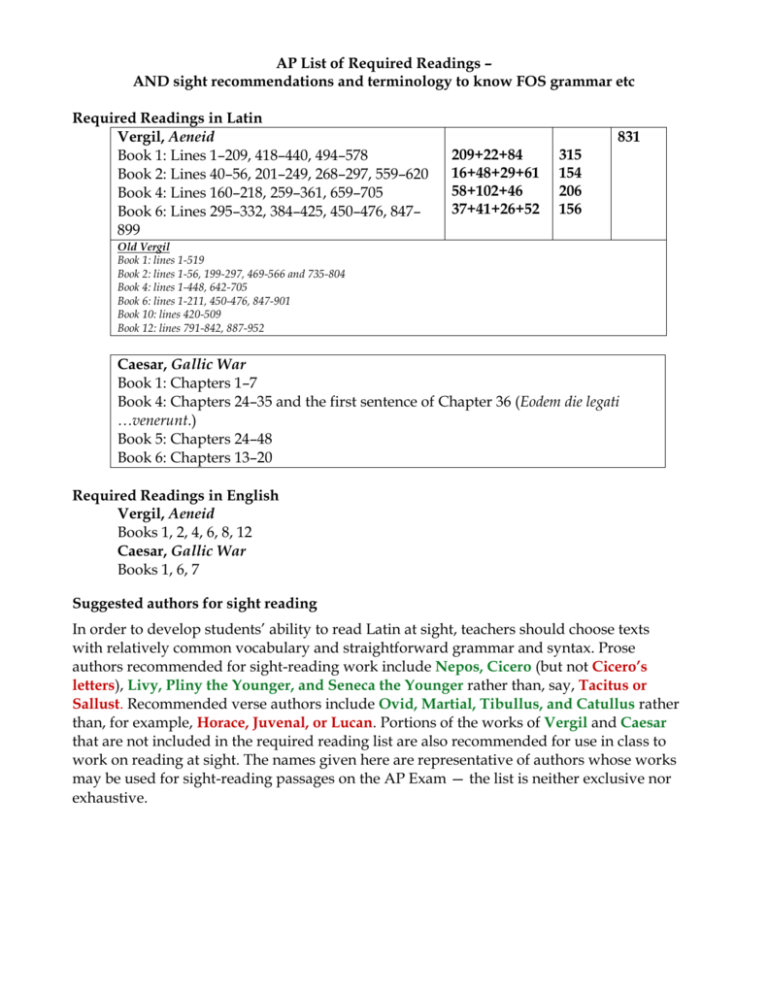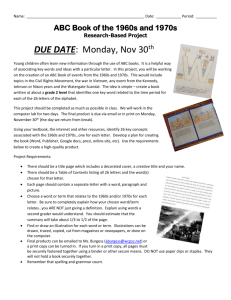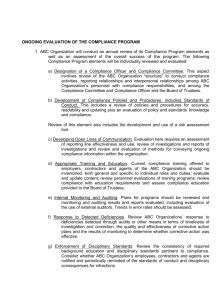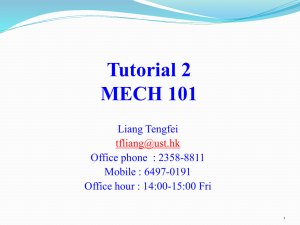Compilation of Test info
advertisement

AP List of Required Readings – AND sight recommendations and terminology to know FOS grammar etc Required Readings in Latin Vergil, Aeneid Book 1: Lines 1–209, 418–440, 494–578 Book 2: Lines 40–56, 201–249, 268–297, 559–620 Book 4: Lines 160–218, 259–361, 659–705 Book 6: Lines 295–332, 384–425, 450–476, 847– 899 831 209+22+84 16+48+29+61 58+102+46 37+41+26+52 315 154 206 156 Old Vergil Book 1: lines 1-519 Book 2: lines 1-56, 199-297, 469-566 and 735-804 Book 4: lines 1-448, 642-705 Book 6: lines 1-211, 450-476, 847-901 Book 10: lines 420-509 Book 12: lines 791-842, 887-952 Caesar, Gallic War Book 1: Chapters 1–7 Book 4: Chapters 24–35 and the first sentence of Chapter 36 (Eodem die legati …venerunt.) Book 5: Chapters 24–48 Book 6: Chapters 13–20 Required Readings in English Vergil, Aeneid Books 1, 2, 4, 6, 8, 12 Caesar, Gallic War Books 1, 6, 7 Suggested authors for sight reading In order to develop students’ ability to read Latin at sight, teachers should choose texts with relatively common vocabulary and straightforward grammar and syntax. Prose authors recommended for sight-reading work include Nepos, Cicero (but not Cicero’s letters), Livy, Pliny the Younger, and Seneca the Younger rather than, say, Tacitus or Sallust. Recommended verse authors include Ovid, Martial, Tibullus, and Catullus rather than, for example, Horace, Juvenal, or Lucan. Portions of the works of Vergil and Caesar that are not included in the required reading list are also recommended for use in class to work on reading at sight. The names given here are representative of authors whose works may be used for sight-reading passages on the AP Exam — the list is neither exclusive nor exhaustive. Recommended Themes Literary Genre and Style Views of Non-Romans Roman Values War and Empire Leadership History and Memory Human Beings and the Gods Grammar and Syntax modifies, complements, is dependent on, antecedent gerundive, gerund, supine fearing clause, result clause, purpose clause, relative clause, relative clause of characteristic, relative clause of purpose indirect statement, indirect question, indirect command conditionals mood, imperative, hortatory, or jussive subjunctive passive periphrastic, deponent partitive genitive, genitive with impersonal verb, genitive with adjective, genitive with verb of remembering (forgetting) dative of possession, dative of purpose, dative with compound verb, dative of agent, dative of reference, dative with special verbs accusative of duration of time, accusative of respect ablative, ablative absolute, ablative of separation, ablative of comparison, ablative of specification, [AKA Abl respect] ablative of cause, ablative of description, ablative of degree of difference, ablative with special verbs, ablative of time when, ablative of time within which vocative Literary Style alliteration, anaphora, apostrophe, asyndeton, chiasmus, enjambment, hyperbaton, hyperbole, litotes, metaphor, metonymy, onomatopoeia, personification, polysyndeton, rhetorical question, simile, synchesis, tmesis Multi-choice passage 2012 11 questions translation grammar reference - ille refers to..., what does quo in line xyz refer back to figure of speech meter – Big Changes Translation passages are 15 chunks at 1pt a piece [not 18] Everything done on a 5 point system instead of a 6 point system “Spots” or short-answer questions have replace the old short essays on the Latin syllabus reading and the English syllabus reading—on Vergil and Caesar—which allow students to demonstrate their ability to provide literal translations, to scan dactylic hexameter (for poetry), to identify grammatical constructions, and to provide contextualization and show comprehension of connections to the English readings. English readings will account for three to five percent of the exam and will be limited to syllabusbased multiple-choice and “spot” (or short-answer) questions. Staying the Same Multichoice points given for correct answers, no deductions for wrong. No dictionaries Scan dactylic hexameter Test Breakdown of Question Types and Example Formats Using Official Practice Exam as Example Full 3 hr test Multiple Choice 50% Free Response 50% 1 Hour 20 syllabus-20% 10% Verg 10% Caes 30 Sight-30% 15% poetry 15% prose 2 hours 15 chks Verg trans-7.5% 15 chks Caes trans-7.5% 45 min Essay-20% 5-7 sht ans Verg-15% 5-7 sht ans Caes-15% Number of lines and questions per section based on analysis of practice test [NOT on info from college board] 10 lines – 12 questions 15 lines – 12 questions 13 lines – 13 questions 16 lines – 13 questions 5 lines 5 lines 6 lns Caesar vs 9 lines Vergil – comparison 7 lines – 5?’s [who, scan 1 line, content question w/Latin support, grammar point with translation, comparison to English elsewhere] 7 lines – 6?’s [content, who, why historical context, content, grammar point with translation, comparison to English elsewhere] MultiChoice – breakdown of question types for each multiple choice passage 2-4 background/English reading ?’s [syllabus based only] 2-5 content summary [more for sight] 2-4 translation [one word, a phrase, or a whole sentence] 2-4 grammar 1 reference [qui/haec etc. refers to] 1 figure of speech/literary device 1 scan [poetry] 1 theme [maybe] Format of some of the typical questions: Content/summary In line x [abc..def,] we learn that… From lines x-y [abd…def,] we can infer that… Meter The metrical pattern of the first four feet of line x [abc…def] is: a. spondee-dactyl-spondee-spondee Translation Line x [abc…def] is translated In line x, abc is translated Figure of speech/literary device A stylistic device used in line x [abc…def] is What feature of literary style occurs in lines x-y [abc…def]? Grammar In line x, the grammatical function of abc def is In line x, abc is an ablative/accusative/etc of In line x, the case of abc is dependent on The case and number of abc [line x] are The verb abc [line x] is subjeunctive because it appears in [type of clause] In line x, abc isthe object of In line x, -que connects 2-5 content summary [more for sight] Content/summary In line x [abc..def,] we learn that… From lines x-y [abd…def,] we can infer that… 2-4 translation [one word, a phrase, or a whole sentence] Translation Line x [abc…def] is translated In line x, abc is translated 2-4 grammar Grammar In line x, the grammatical function of abc def is In line x, abc is an ablative/accusative/etc of In line x, the case of abc is dependent on The case and number of abc [line x] are The verb abc [line x] is subjeunctive because it appears in [type of clause] In line x, abc isthe object of In line x, -que connects 1 reference [qui/haec etc. refers to] 1 figure of speech/literary device Figure of speech/literary device A stylistic device used in line x [abc…def] is What feature of literary style occurs in lines x-y [abc…def]? 1 Meter-scan [poetry] The metrical pattern of the first four feet of line x [abc…def] is: 1 theme [maybe] Hustwit’s breakdown for creating tests that mirror the actual test 30 minutes 10% Syllabus based Verg – 5 lines, 6 ?’s Caes – 7.5 lines, 6 ?’s 15% Sight Poetry – 7.5 lines, 7 ?’s Prose – 8 lines, 7 ?’s 1 hr- 1/3 test single author [6wks test] 20 minutes 7% Syllabus based Verg or Caes – 8 lns, 8?’s no other author 10% Sight Poetry- 4 lns, 4-5 ?’s Prose- 5 lns, 4.5 ?’s 1 hour Translation Verg- 2.5 lns, 7-8 chunks Caes – 2.5 lns, 7-8 chunks 40 min Translation Verg/Caes 3 lns, 10 chunks no other transl 20% 45 min Essay6 lns Caesar vs 9 lines Vergil – comparison 23 min Essay 15 min Essay Short Answer 15%-5-7?’s sht ans Verg7 lines – 5?’s [who, scan 1 line, content question w/Latin support, grammar point with translation, comparison to English elsewhere] Short Answer 3 sht ans Verg 3.5 lns, 3 ?’s Short Answer 4-5 sht ans Verg/Caes no other sht ans 5 lns, 4-5 ?’s Full 3 hr test Multiple Choice 50% 1 Hour 20% Syllabus10% Verg-10 lines – 12 questions [80wds] 10% Caes-15 lines – 12 questions [100wds] 30 Sight-30% 15% poetry-13 lines – 13 questions 15% prose-16 lines – 13 questions Free 2 hours Response Translation 50% 7.5%-15 chks Verg trans-5 lines 7.5%-15 chks Caes trans-5 lines 1.5 hr - ½ test [semester exam] 15%- 5-7?’s sht ans Caes3 sht ans Caes 7 lines – 6?’s [content, who, why 3.5 lns, 3 ?’s historical context, content, grammar point with translation, comparison to English elsewhere] Short Answer – transl, scan, grammar, context, Eng connections





